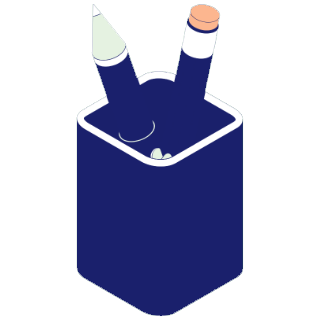A Guide to Commodity Trading
Published: March 05, 2024
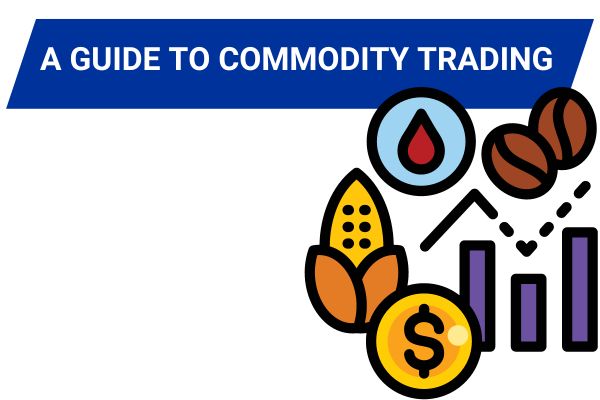
Commodities have a crucial role in our daily lives. Without these resources, most of our necessities wouldn't be available. We won't have energy, food, shelter—you name it!
But do you know that aside from its benefits to our daily lives, commodities can be used to secure our financial futures by investing and trading them?
With commodity trading, you can grow your capital by investing it in metals and soft commodities. Here, you exchange your assets for either a physical form of the commodity or a standardized commodity contract (futures contracts or options contracts).
Lesson Highlights
- Traditionally, commodity trading involves exchanging one commodity for another or a commodity for money.
- Commodity trading primarily involves buying and selling contracts, such as futures or options contracts. Essentially, commodity traders don't own a physical form of the commodity; they simply own a contract that certifies their ownership of a certain commodity.
- The commodity market is highly dependent on the supply and demand of such commodities. The higher the demand and lower the supply, the higher the prices. Likewise, a high supply and low demand translate to a lower price.
- Analyzing the commodity market is relatively harder than other financial markets (forex, crypto, or stocks). The supply and demand of commodities are highly affected by unforeseen events like weather, epidemics, geopolitical conflicts, and natural and human-made disasters.
What Are Commodities
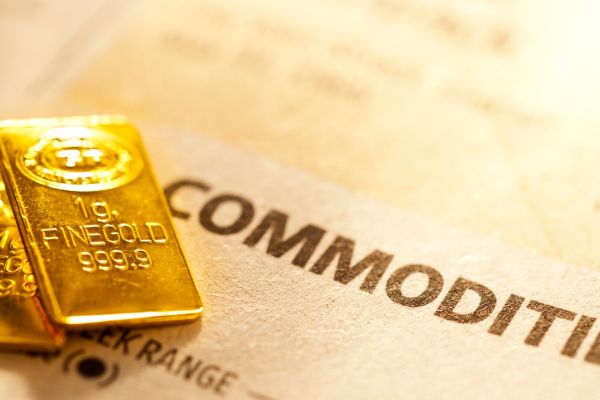
We see, use, and benefit from commodities in every aspect of our lives. But what are they?
Commodities are raw or unprocessed materials used to produce goods or services. Essentially, people buy these to make something else that consumers will eventually consume.
Here are the common commodity types:
| Energy | Crude Oil, Natural Gas, Coal, Ethanol, Uranium, and Solar Power |
| Metals | Gold, Silver, Platinum, Palladium, Iron Ore, Tin, Copper, and Zinc |
| Softs (Also known as "Agricultural Products") |
Cocoa, Sugar, Wheat, Grain, Cotton, Rubber, and Palm Oil |
| Livestock | Feeder Cattle, Pork Bellies, Live Cattle, Lean Hogs |
These commodities are mainly categorized into two;
- Hard commodities: These are natural resources that are extracted or mined. This includes metals and energy products.
- Soft commodities: These commodities are mainly from agriculture. This includes agricultural products and livestock.
For a trader like you, commodities are an effective way to diversify your trading portfolios beyond the usual securities. You can hedge your position against inflation and other market risks with commodities.
Also, you can access more valuable and profitable assets to grow your investment.
History of the Commodity Trading
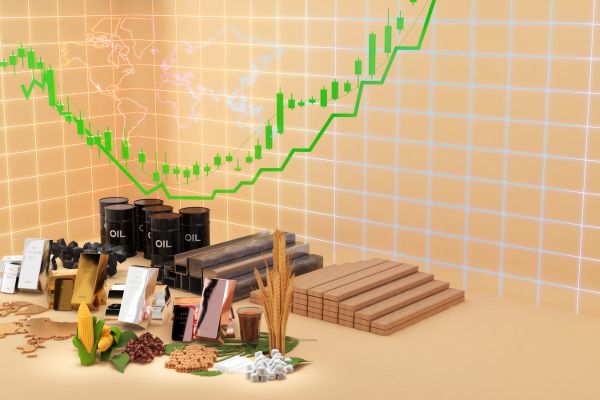
Okay, let's look at the history first. If you open your history book, you see how trading dates back to ancient times.
Remember in your history book when a merchant met with another one, gave something, and returned to its empire with something new and even more valuable? Well, that's commodity trading for you!
In that situation, you've witnessed how ancient people engaged in trade, exchanging goods and resources. This exchange of commodities was crucial for the growth and prosperity of colonial.
But does commodity trading still work like that? Absolutely not.
Today, there's no need for you to go to places just to buy, sell, or trade commodities. (Well, you still can if you want!)
But in this technologically dependent time, traders have found it easy to access the commodity market with just a fingertip. However, when you trade commodities, you don't own a physical form of, per se, gold or crude oil.
What you have is a contract that certifies your ownership or share of the commodity. These contracts certify the trader's rights and obligations related to the underlying commodity without the need for physical possession.
So, it's more like a contractual agreement between you and a regulated commodity exchange authority.
Here are the major global commodity exchanges:
- Chicago Mercantile Exchange
- London Metal Exchange
- Tokyo Commodity Exchange
- New York Mercantile Exchange
- Intercontinental Exchange
How Commodity Trading Works
Commodity trading involves investing in physical materials like gold, oil, or other agricultural products.As mentioned, you don't own a physical form of these commodities. When you trade commodities, you purchase or sell your contract of ownership of a specific commodity.
But how do you profit from this?
Like in any financial market, you profit from the commodity market through price fluctuation. The simple "buy-low, sell-high" trading logic applies here. Essentially, you speculate on the commodity's current or future price movement, properly position your trade (long or short), and hope that the market moves in your favor.
Commodities are either for immediate delivery in spot trading or for conveyance later when traded as futures.
However, you need to be cautious when you trade commodities. This market is considered risky because the supply and demand of these products are heavily affected by unforeseen events like;
- Natural disaster
- Human-made disasters
- Extreme weather
- Epidemics
- Geopolitical conflicts
Spot Trading
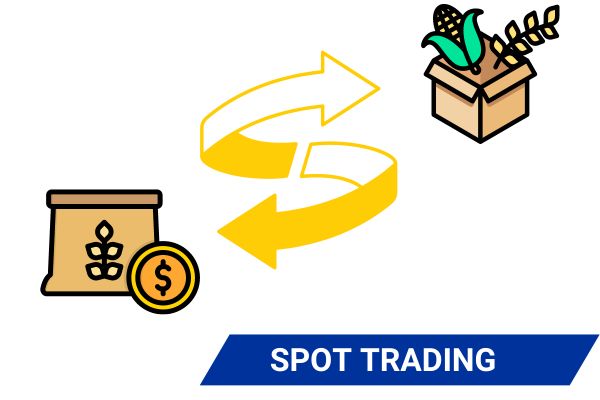
You can spot trade when you want the commodity to be delivered instantly. Here, you buy and sell a commodity in a cash market instead of a derivatives market.
Prices in the spot market are determined by supply and demand factors at the current moment because they involve the immediate exchange of commodities for cash or immediate delivery.
In the spot market, you interact directly with the transaction's counterparty. This transaction is made without the use of futures contracts or other derivative instruments.
Spot trading is commonly used for commodities that are perishable or have immediate consumption, such as agricultural products (e.g., wheat and corn) or energy products (e.g., crude oil and natural gas).
Futures Trading
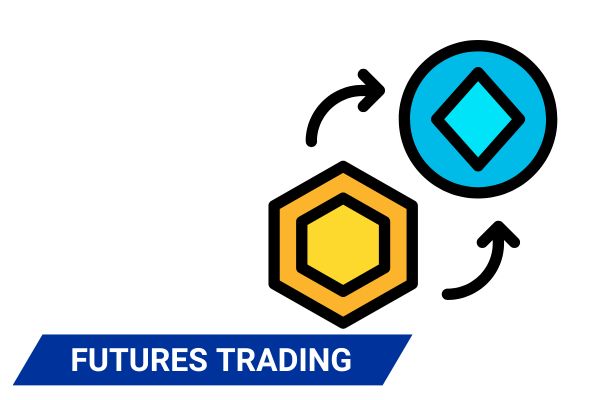
This is the most popular way of trading commodities. As the name suggests, futures commodity trading involves commodity deliveries at some point in the future.
When you trade futures, you make a contractual agreement with another investor. Essentially, you either want to buy or sell the contract at the future price of the commodity.
Commodity Traders: Who Are They?
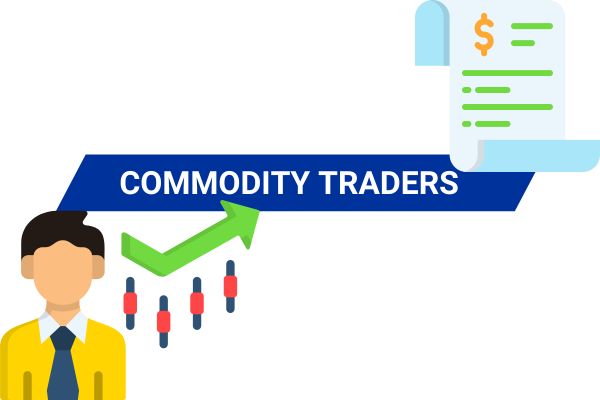
The commodity participants are individuals or entities who buy and sell commodities in various financial markets.
These market participants play a crucial role in facilitating the exchange of physical goods and financial instruments related to agricultural products, metals, energy resources, etc.
Hedgers
The market participants are the ones who produce, ship, process, and handle the commodities at hand. So, it's safe to conclude that hedgers are essential in the futures markets because they provide liquidity and manage price risk for a specific commodity.
There are the common types of hedgers in the commodity market:
- Buy-side Hedgers
- Sell-side Hedgers
- Merchandisers
Speculators
Speculative traders aim to profit from short-term price movements in commodity markets by buying low and selling high, or vice versa. They often rely on technical analysis, fundamental analysis, and market trends to make trading decisions.
These traders speculate about the commodity market movement, whether the market goes up, down, or static to its position within a specific period. They position their trade based on market analysis, aiming to profit from market fluctuation.
For this course, you'll explore the complexity of commodity trading. Essentially, you dive deeper into the types of commodities and the best practices to profit from such markets.
Commodities Lesson Outline
